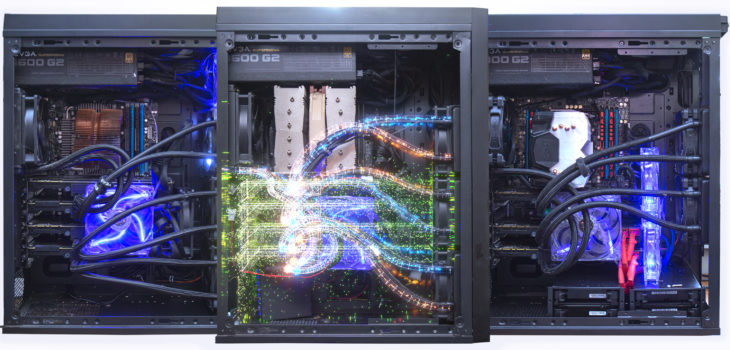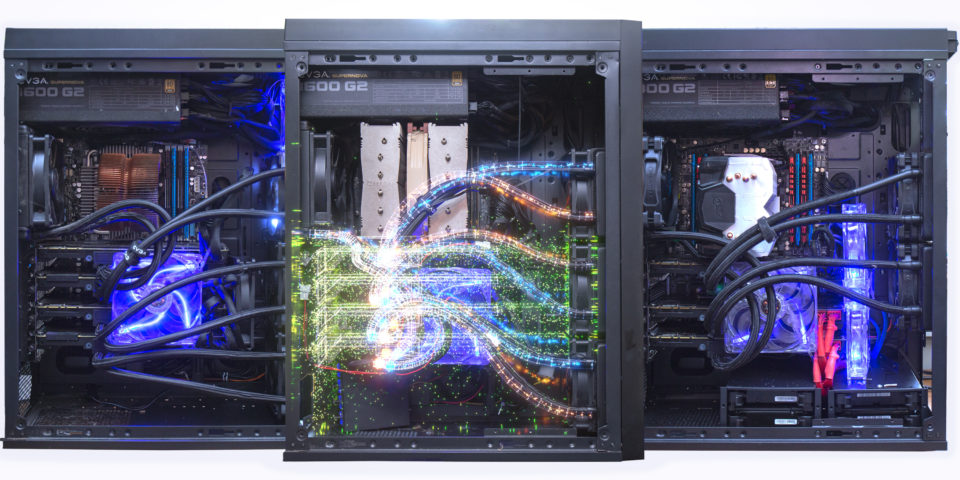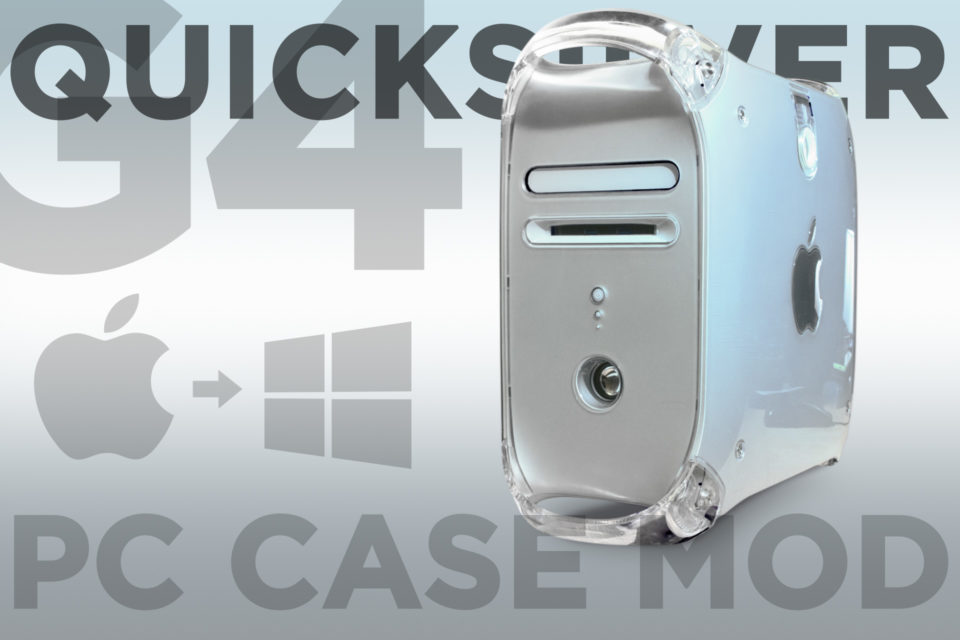
A lot of render power for a little less cash.
It’s got an Octane benchmark score of over 1700 – about equal to 2.5 RTX 3090s – for a bit less money (at the time of writing – mid 2020). Thank you eBay! While everyone clamored for the new (and huge!) RTX cards, I threw a bunch of old GPUs together and got the same performance.
Update 2021 – With the rise in the popularity of cryptocurrency I have begun mining with my render rig. Find out how you can too!
I will admit, the spiffy new RTX cards are in fact more capable, have more VRAM and presumably a longer life. And there’s an argument about future-proofing your investment. Aaaaand you need less cards. But right now, my 3 boxes containing 11 pretty good, last-gen GPUs gives me plenty of power to work with, and I can always sell these cards and upgrade as time goes those used 2080TIs 3090s get more affordable. Mmmm savings.
Of course there are consequences for going with my multi-machine setup. I had to buy 2 Octane Render Node licenses on top of my Enterprise subscription. That added a recurring $200/year charge. And let’s not forget the extra electricity costs, which I estimate could be between $300-$500 a year. In my case I already had those other two computers (minus a few parts) so I’m not factoring that in for myself, but for you, yes you would have to consider that cost as well. If you need to buy an entire second (and/or third) PC you might not save anything. Luckily with Octane the system specs don’t actually matter all that much. My 2600k from 2011 has no problem managing its Octane node software.
On the plus side, I have a second (and third) system that is a workstation backup ready to go with all my software installed. That also means I can render remotely on this system while I continue to work on my main rig. This works fantastically for After Effects since I can have two computers signed in at once. With Octane, however, I need full licenses for both Octane and Cinema 4D (as well as any additional plugins). Certainly less ideal, but still worth the cost and the trouble to render in the background while actively using live viewer. Having the other computers also gave me a place to put my 4 backup drives. It wouldn’t be a big deal to have them in my main system but I wanted to prioritize airflow in the systems with 4 GPUs. They are all AIO water-cooled cards but they still get quite hot inside the box.
Let your GPUs go naked!

Speaking of airflow, I took off my GPU shrouds. It seems like everyone on the internet wants to tell you the shroud directs airflow to the back of the computer, but with stacked GPUs that rule just doesn’t apply. The top 3 cards get sandwiched with almost no air intake and just get hotter. Trust. Without the shroud air can get in from all sides, and some external fans will keep the air moving over the VRAM and VRMs way more effectively than a stupid plastic tunnel. Air mostly comes in from the back of the case and out the front and top. It was a choice dictated by the all AIO cooler setup, as all the radiators exhaust outside the case.
If you’re wondering why the heck I bought 11 AIO coolers instead of making a full custom water loop – mostly cost but also convenience. The AIO coolers are by far the cheapest and most efficient way to get the temps down on a GPU. And if one craps out on me (which I fully expect as the 980Tis are getting old) I can replace it quickly and easily without making a mess.
What's in the box???
For those who care, here’s a complete breakdown for each system.
Workstation 1
Render Box 1
Render Box 2
CPU cooler – Zalman 2 Ball
RAM – assorted 1333 DDR3 – 32GB total
Motherboard – ASUS P8Z77 WS
PSU – EVGA Supernova G2 1600 Gold
GPU – 4x EVGA hybrid 980Ti
System drive – WD Blue 3D 2.5″ 128GB SSD
Case – Rosewill ATX Full Tower Gaming PC

A word about AMD vs Intel
I can only speak for myself, but after getting frustrated with the weird performance of my Threadripper 2990WX 32-core processor, I ended up going back to Intel. I understand that software updates have improved the memory scheduling issues in Windows and the 3 series Ryzen is better than the 2. In my case render times are totally dependent on my GPUs and not my CPU, so what really counts is being able to interact with my system faster. The Ryzen platform can kick out some sweet renders once you hit that button, but before that, while you are actually doing the work, I found that Intel makes for a smoother experience regardless of the generation. My 2600K is still less clunky in After Effects than the brand-spanking-new Threadripper I wanted so much to love. Perhaps it’s just a matter of stubborn individual bias and a lemon build but I can’t recommend AMD to anyone who wants to do creative work on their PC.
It really doesn't matter.
I love love love to talk about computers and I’m opinionated as the rest, but at the end of the day it’s about what you do with your tools. I just spent a whole day photographing my computer parts and writing this article just so I could share my workstation with the world. What a waste of time. Beeple worked on some shitty laptop for like 10 years or whatever probably. At a certain point you have to just work with what you have. Limitations can be good. Time to shut up and do the work.


